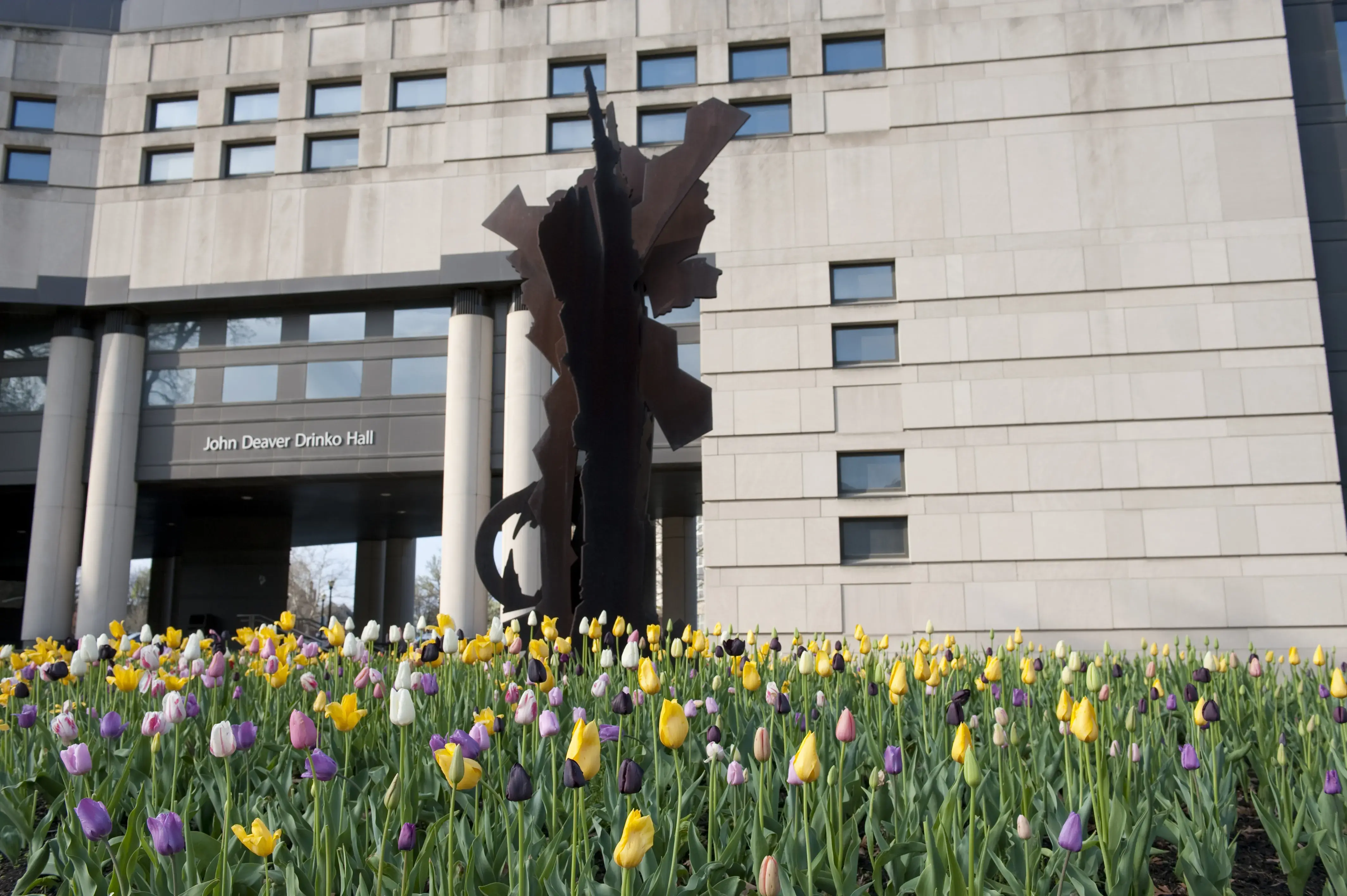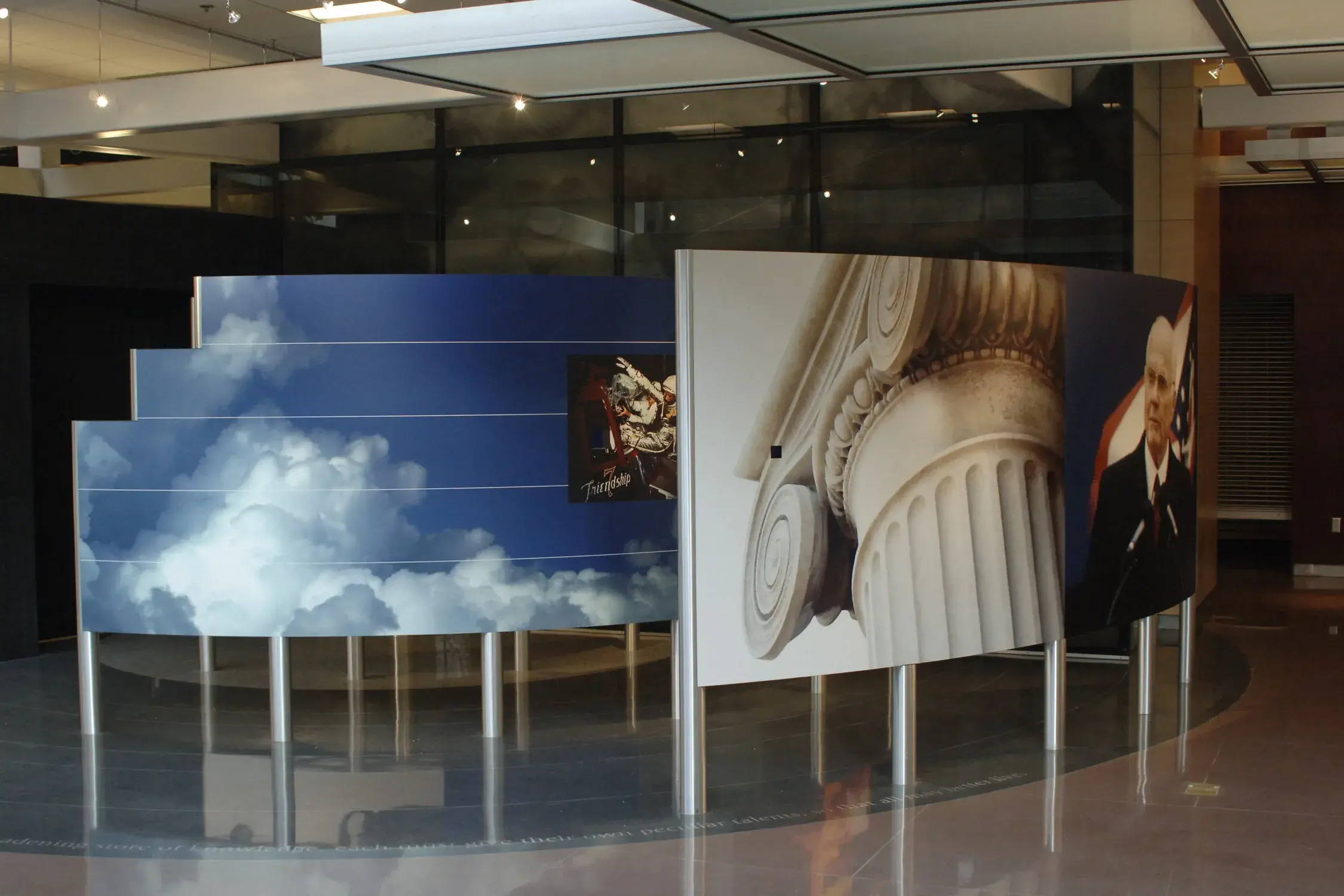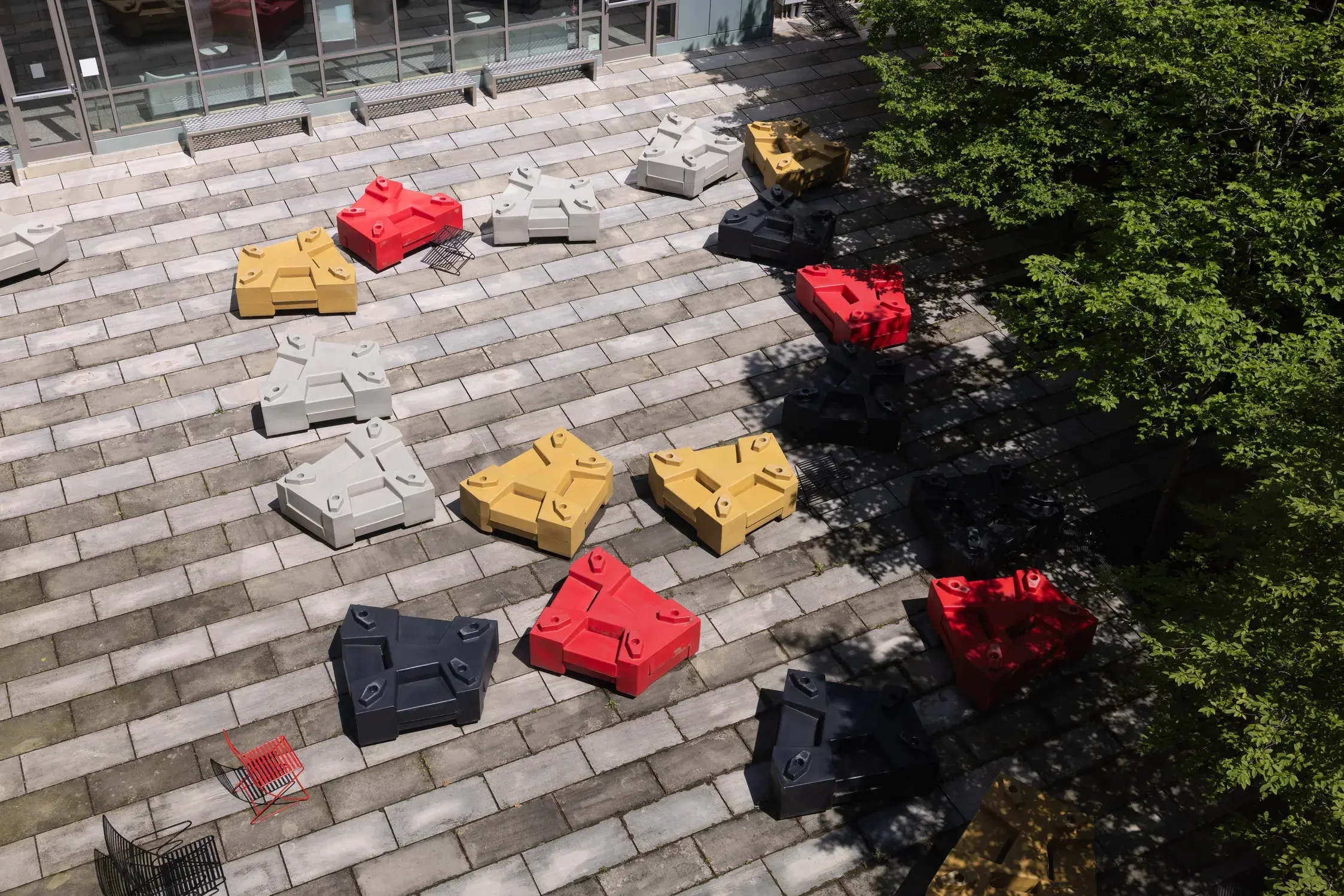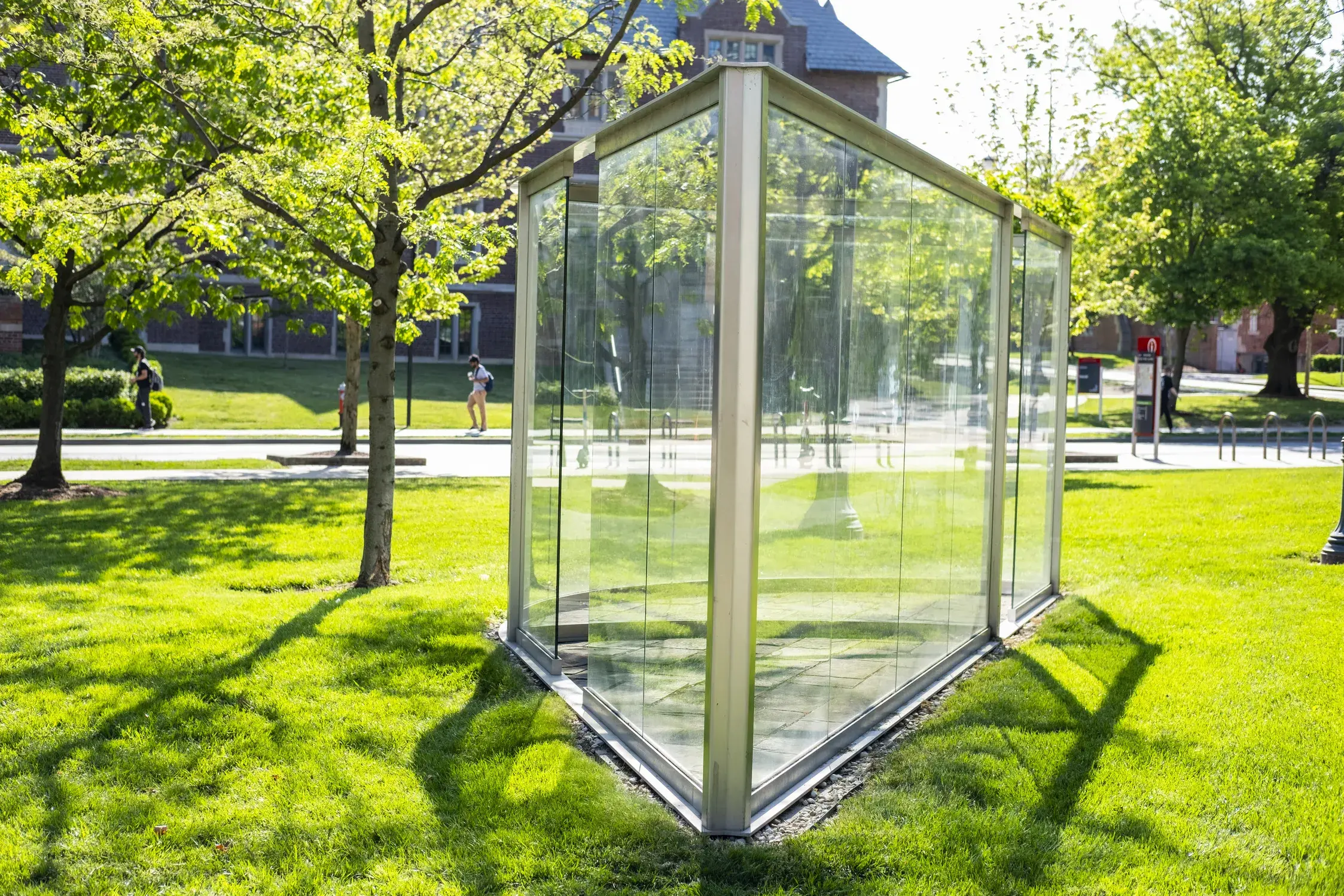
About the Art
Penultimate Curving Pavilion, an installation by Dan Graham located just northeast of Jennings Hall, measures around twenty feet at its longest side and takes the shape of an elongated semicircle divided into two sections by a curved partition. The structure’s bulk is made of glass panels held in place at the top and bottom by arcing metal beams. Crucially, the pavilion is not just meant to be viewed from the outside. Two small openings in its glass facade — one for each interior section — allow spectators to step inside the artwork onto a gray stonework floor. The glass panels are also reflective on both sides, meaning that the viewer exists “inside” the artwork in two distinct ways. On a literal level, spectators can enter the pavilion like a building, but doing so (or even observing the artwork from the outside) inevitably causes the spectator’s image to be reflected on the pavilion’s walls and become active participants in the construction of the pavilion’s meaning.
Graham created many pavilions like this throughout his career; they can be found in numerous countries, from Japan to Sweden to the United States. As its title would suggest, however, the pavilion on The Ohio State University campus was one of the last ones Graham produced, only a decade before his death at 80.
Collection of The Ohio State University. Funded through the Ohio Percent for Art program.
Material
Steel, two-way mirror glass
Location
Outside of Jennings Hall

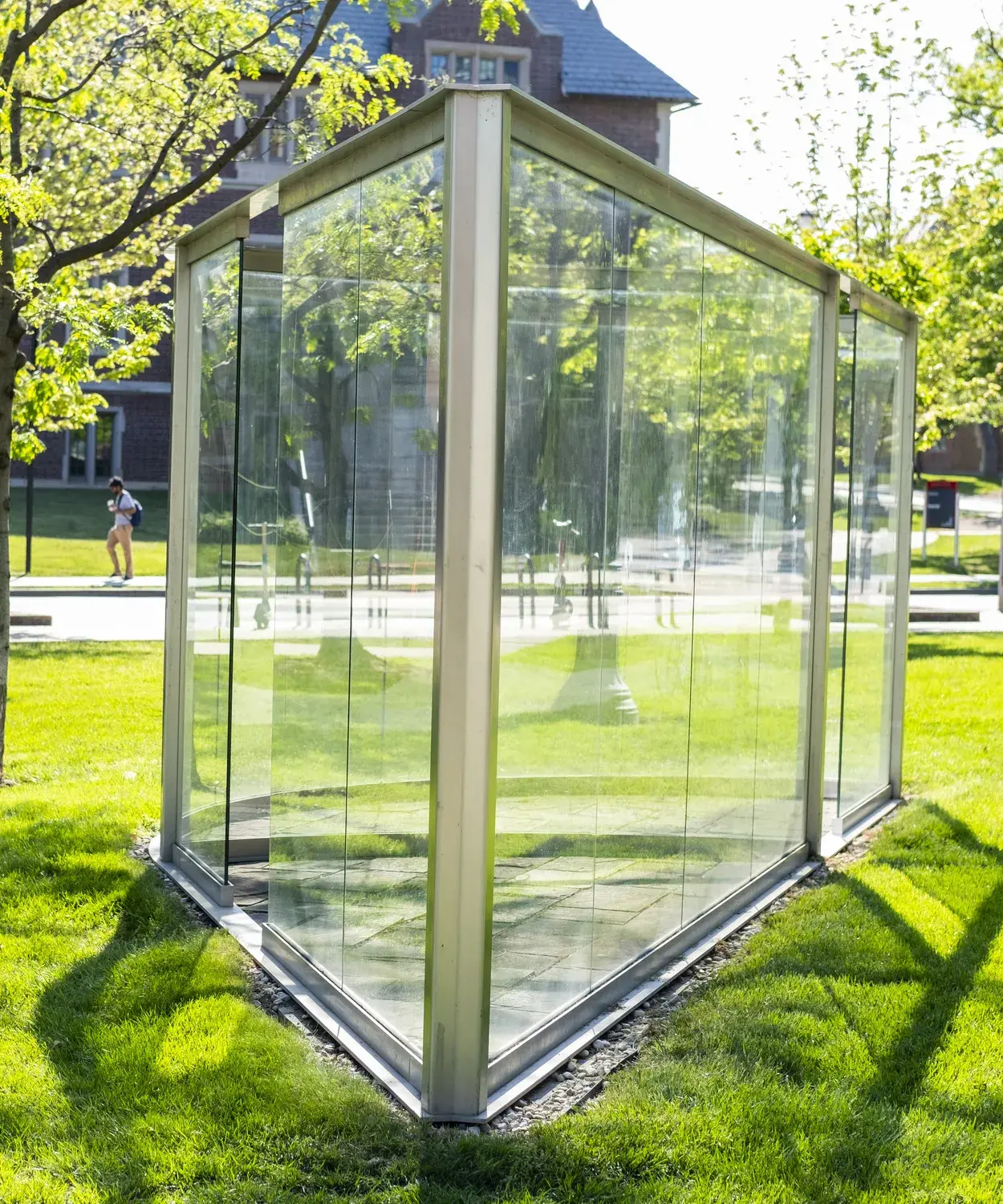
About the Artist
Dan Graham was an acclaimed Illinois-born polymath who considered himself a writer or architect first and an artist second. His interests in art theory and philosophy shaped the trajectory of his career. Impossible to classify, Graham did not consider himself a part of any movement. His pieces ranged from photography, performance art, film, sculpture and sizeable pavilions. His fascination with video-making was radical. In Graham’s hands, the relatively new technology was used to warp time. He played with spatial effects and double projections, and he cared deeply about exploring the role of the audience. One of his works, Performance/Audience/Mirror (1972), included a large mirror that an audience sat in front of while Graham narrated their movements.. He then described the way his own body moved in the reflected space. Much of his work centered around self-perception and public participation. He is most known for his thought-provoking architectural pavilions, which often use mirrors and two-way glass to agitate their audiences. Graham had mental struggles throughout much of his life but firmly believed that art should be playful, unsettling, introspective and above all: fun.
